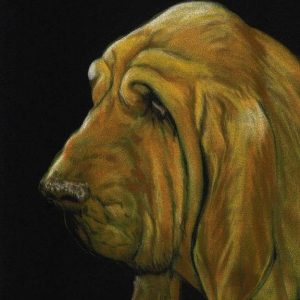
If you had lived in the Middle Ages (and contrary to gossip, we didn’t), you might have been a monk or nun, peasant or serf, vassal, artisan, merchant or knight – maybe even a royal – and while people in the Middle Ages did keep dogs, the canines had to serve a purpose, and being a pet wasn’t one of them…….unless you were a lucky nobleman or royal.
The Nobles used hounds for the hunt, of course, and often there was one dog who captured the favor of its master and was allowed to sleep in the bed chambers. Other dogs were in the care of a Master of Hounds whose responsibility was to train and properly feed the hounds (it was expected that the hounds would get to eat some of whatever game they helped catch).
In addition to sighthounds were “Lyam Hounds.” These scenthounds were hunted on “lyams,” or leashes that were used to pick up the trail of wild boars or deer known as “harts.” Once the scent was gotten, faster hounds were set loose to hunt the quarry down. The Lyam Hound was also called the “Sleuth Hound” and the latter would be mentioned throughout history.
One source indicates that the Sleuth Hound first appeared in poems about Scottish patriots, Robert the Bruce and William Wallace being tracked by Sleuth Hounds. Mention of the “Sleuth Hound” would appear many years later when John Caius referred to them being used to track cattle thieves along the border of England and Scotland, though he wrote, “slewe dogges’). Caius’ description have made many cynologists believe that the Bloodhound and Sleuth Hound were the same dog.
Fast forward to the current century, and ‘Sleuth hound’ is the name of a New Zealand beer that was originally a home-brew. It evolved into ‘Bloodhound,’ and because we’re thinking that you’d want to know, the former featured a different yeast, different hops and a touch of peat-smoked malt. Just saying.
Bloodhound by Charlotte Yealey
charlotteyealeyart.com
